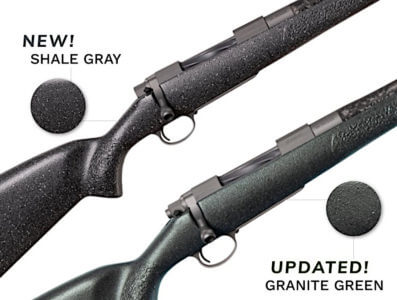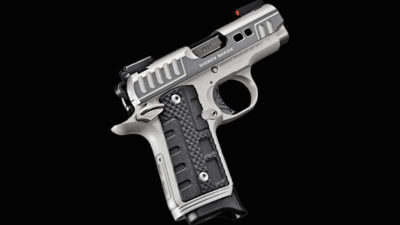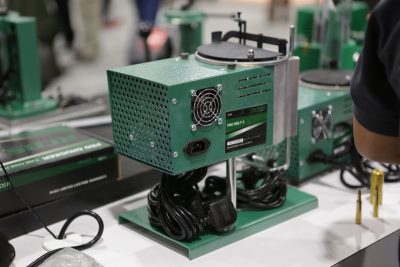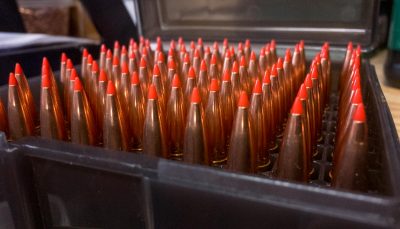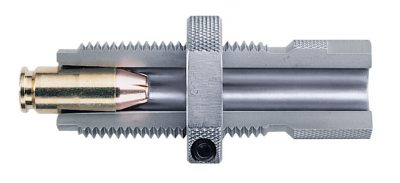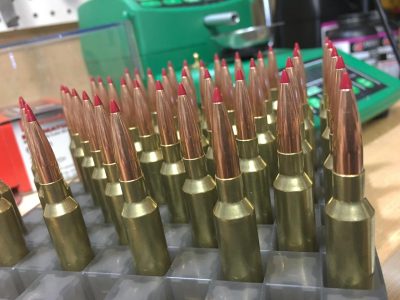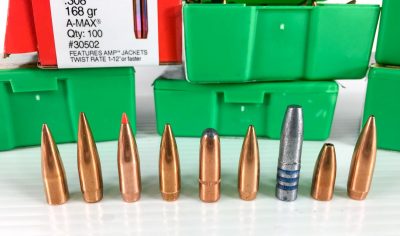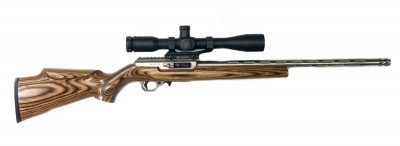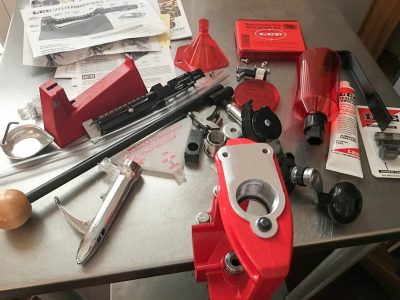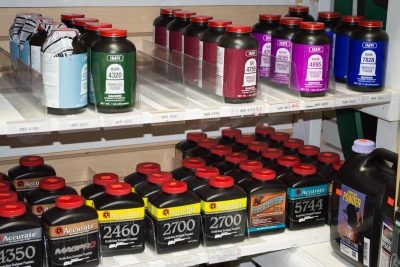Nosler is continuing to expand its top-flight M48 Mountain Carbon series with updated color options and added chamberings, while updating its reloading guide.
Search: Reloading series
Show First
Kimber America Expands Rapide Series with Micro 9 Black Ice Pistol
The Rapide Black Ice maintains the basic Micro 9 feature set but adds all the hot Black Ice improvements and tweaks.
Reloading with RCBS: Keep It Green: Shoot It Clean — SHOT Show 2018
RCBS has come to market this year with several updates. First off, they’re offering 30-pound pound Rotary tumbler with ergonomically friendly embedded handles. Let’s face it, dropping 30 pounds of brass and media isn’t something you want on a bare toe and these handles are a welcome and improved design. The RCBS lead furnace is also upgraded to a 25-pound capacity with a digital temperature control. Building from the same technology, they’re also offer25-pound pound lead pot is now available with a digital control.
Reloading: Final Inspection and Packaging Tips
The very last step in the reloading process is inspection and packaging. After all is done, I like to combine the inspection and packaging steps. As I put each completed cartridge into a box, I look it over to make sure everything is in order.
Reloading: To Crimp or Not to Crimp, That is the Question
Crimping gets a bad rap. Just as we sometimes tend to fix construction mistakes with a hammer rather than taking the time to properly fit parts, we tend to view crimping as a way to “fix” a less than perfect bullet seating. The problem with crimping is that it sounds so logical. The word “crimping” kind of implies the process of locking a bullet in place. But, there is more to it than just that.
Reloading: Seating and Crimping Bullets
So, let’s discuss the topic of seating and crimping in the reloading process. Stated simply, the seating step simply means jamming a new bullet into a cleaned, resized, primed, and powder-charged cartridge case. Crimping “generally” refers to the act of bringing the neck of the cartridge case back to proper dimension after that bullet is stuffed in. There’s a lot more to both actions, especially if you want to be safe, so let’s take a closer look at both steps.
Reloading: Bullet Materials and Shapes
Bullets are bullets, right? Well, not really. There are a wide array of variables in bullet shape, weight, materials, and construction. Each of these variables can have a dramatic impact on the performance, and safety, of any given load. In other words, loading recipe data for one 147-grain, .308 bullet may be incorrect, and even unsafe, for another projectile of equal caliber and weight. Let’s take a closer look at some of the variables and what you need to know about each.
Tom McHale – (Rimfire Gear Wishlist)—.22 LR Reloading Kit?, Volquartsen .17 WSM & More! #Xmas2016
There’s just something about shooting rimfires. Even with all the cool calibers I get to test out, I never, ever tire of shooting rimfire pistols and rifles. Maybe they just bring one back to the pure joy of plinking. The lack of noise, muzzle blast, and recoil isn’t a bad thing either as you can focus on the pure enjoyment of shooting. Even with the higher prices of rimfire ammo these days, you can do a whole lot more shooting for your dollar.
Can You Start Reloading For Less Than $200? A Look at Lee Breech Lock Challenger Kit
The topic of discussion was whether you could get started reloading your own ammunition for less than $200.
Reloading: Powder, Propellants, and Pressure
When it comes to reloading, the powder is the biggest variable. Not only do you need to worry about the exact amount of powder in a charge, you also need to consider the type of powder. By my rough count, and this is not at all official, there are somewhere around 150 types of powder on the market.

